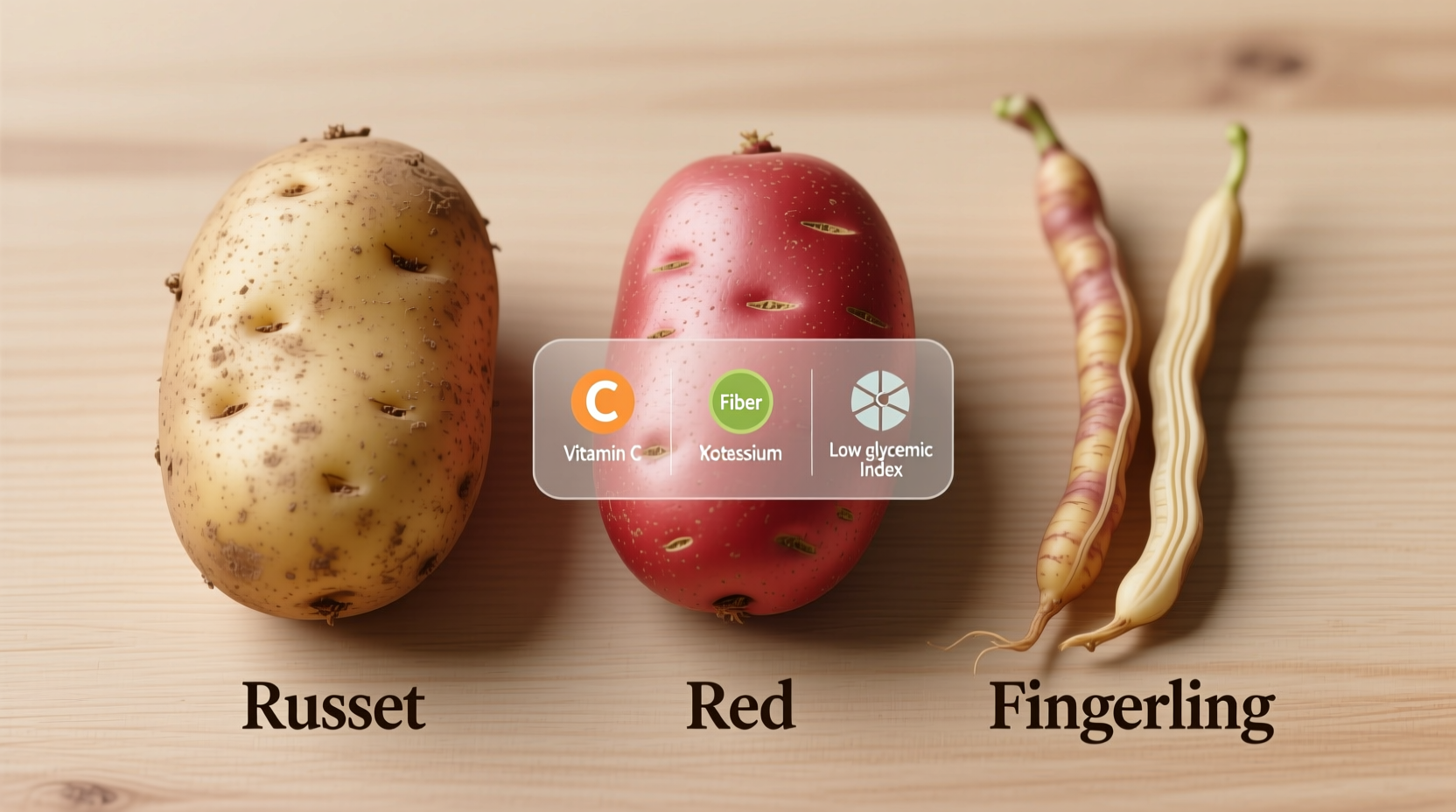When choosing potatoes for optimal health benefits, understanding the nutritional differences between varieties is crucial. This guide cuts through the confusion with evidence-based comparisons, helping you make informed decisions that align with your dietary goals—whether managing blood sugar, boosting antioxidant intake, or maximizing nutrient density.
Nutritional Face-Off: Potato Varieties Compared
Not all potatoes deliver equal health benefits. While often grouped together, different varieties offer distinct nutritional profiles that impact their health value. Let's examine the key differences using data from the USDA FoodData Central database.
| Potato Type | Calories (per 100g) | Fiber (g) | Vitamin C (mg) | Antioxidant Activity (ORAC) | Glycemic Index |
|---|---|---|---|---|---|
| Purple Potato | 77 | 2.2 | 19.7 | 2,500 | 78 |
| Sweet Potato | 86 | 3.0 | 2.4 | 1,800 | 70 |
| Yellow Potato | 76 | 2.1 | 15.7 | 900 | 80 |
| Red Potato | 70 | 2.0 | 13.5 | 700 | 89 |
| White Potato | 77 | 2.1 | 11.4 | 600 | 82 |
Source: USDA FoodData Central (2023), American Journal of Clinical Nutrition analysis of potato varieties
Why Purple Potatoes Take the Lead
Purple potatoes contain up to four times more antioxidants than white or yellow varieties, primarily from anthocyanins—the same compounds that make blueberries and blackberries so beneficial. Research published in the American Journal of Clinical Nutrition shows these pigments reduce inflammation and may lower blood pressure.

Unlike sweet potatoes, purple potatoes maintain a similar texture and cooking versatility to traditional potatoes while delivering superior antioxidant benefits. Their vibrant color comes from natural plant compounds developed through selective breeding over the past two decades—a timeline that transformed potatoes from simple starch sources to functional foods.
Context Matters: When Other Potatoes Shine
While purple potatoes generally offer the best nutritional profile, specific health goals might make other varieties preferable:
- For blood sugar management: Smaller red potatoes have a slightly lower glycemic index than larger varieties when cooked and cooled, creating resistant starch that benefits gut health
- For vitamin A needs: Sweet potatoes provide over 300% of your daily vitamin A requirement in one medium serving—unmatched by any regular potato variety
- For potassium intake: Russet potatoes contain slightly more potassium than other white varieties, beneficial for blood pressure regulation
Maximizing Health Benefits Through Preparation
How you prepare potatoes significantly impacts their nutritional value:
- Keep the skin on: Up to 50% of a potato's fiber and many nutrients reside just beneath the skin
- Cool after cooking: Cooling potatoes increases resistant starch content by up to 300%, improving gut health benefits
- Avoid deep frying: Baking or steaming preserves nutrients better than frying, which adds unhealthy fats
- Pair with healthy fats: Combining potatoes with olive oil or avocado enhances absorption of fat-soluble nutrients
Debunking Common Potato Myths
Several misconceptions cloud potato nutrition understanding:
- "Potatoes are just empty carbs": Potatoes provide potassium, vitamin C, B vitamins, and fiber—especially when eaten with skin
- "Sweet potatoes are always healthier": While excellent for vitamin A, sweet potatoes have similar calories and carbs to regular potatoes
- "All potatoes spike blood sugar": Cooling potatoes after cooking lowers their glycemic impact significantly
Practical Recommendations for Your Plate
Based on current nutritional science, here's how to incorporate potatoes wisely:
- Choose purple potatoes when available for maximum antioxidant benefits
- Rotate varieties to benefit from different nutrient profiles
- Limit portions to 1/2 to 1 cup cooked for balanced meals
- Combine with protein and non-starchy vegetables for balanced blood sugar response
- Store potatoes in cool, dark places to prevent nutrient degradation
Remember that preparation method matters as much as variety selection. A baked purple potato with skin provides substantially more nutritional value than fried white potato chips, regardless of the starting variety.











 浙公网安备
33010002000092号
浙公网安备
33010002000092号 浙B2-20120091-4
浙B2-20120091-4